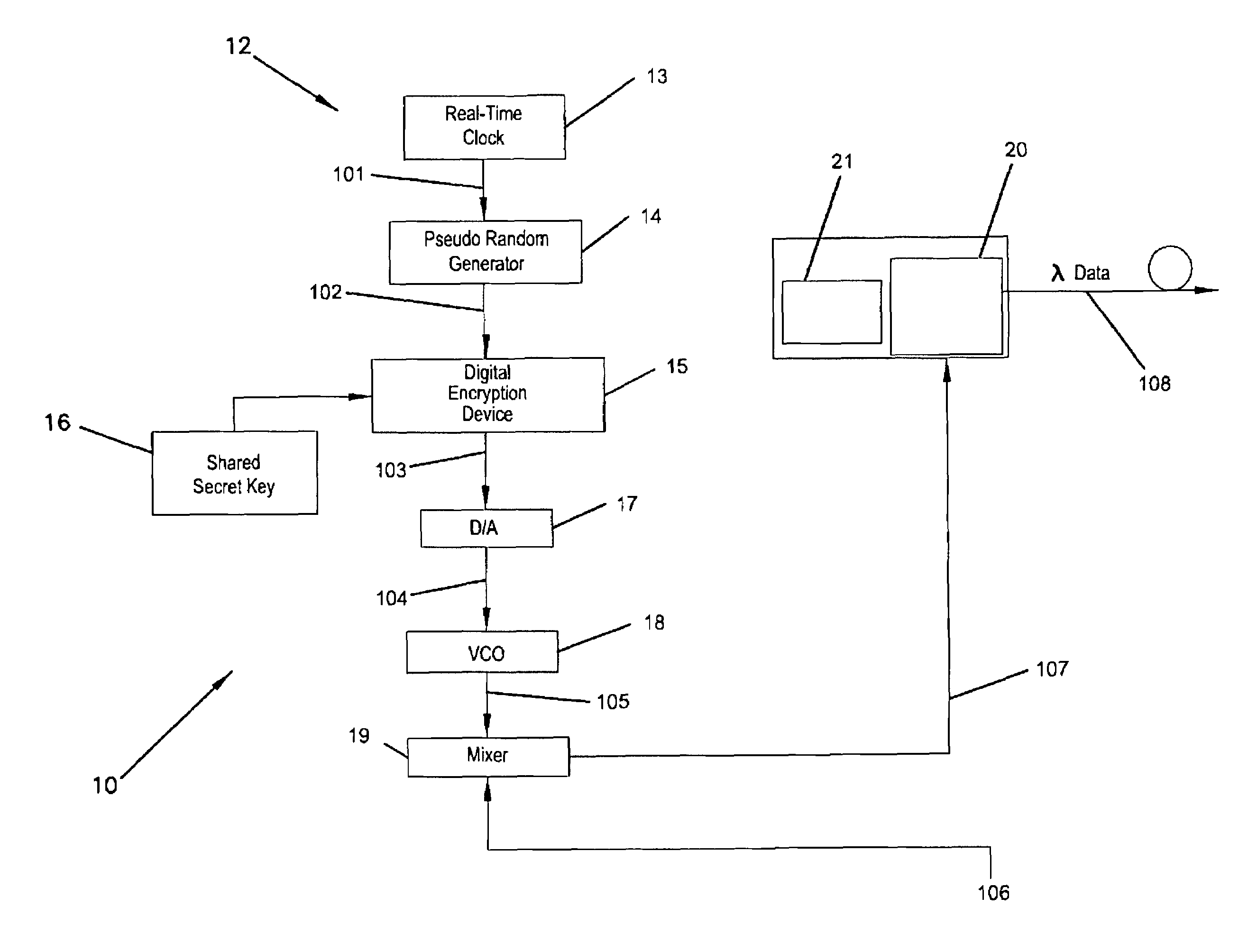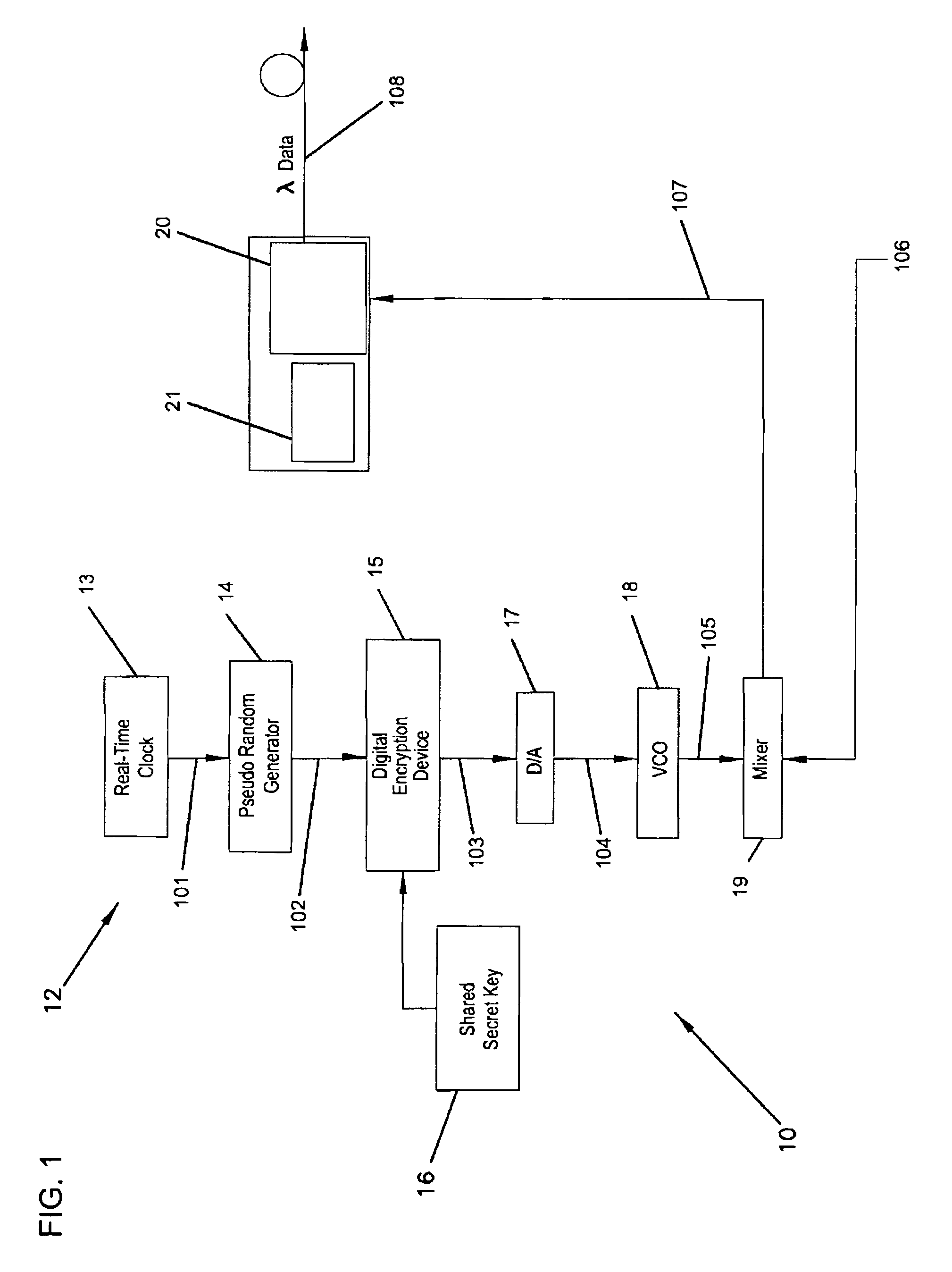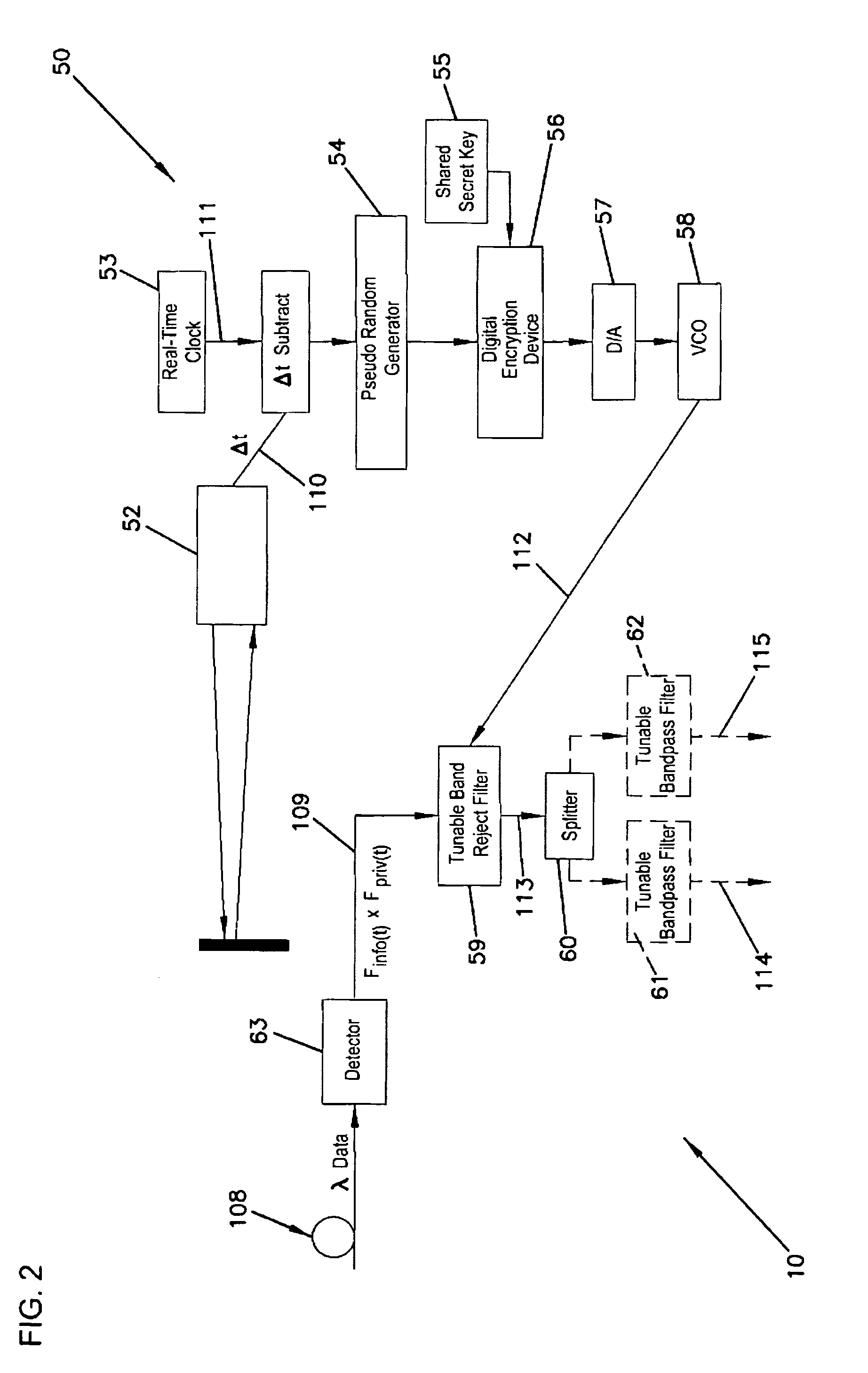Encryption for optical communications using dynamic subcarrier multiplexing
a technology of optical communication and subcarrier multiplexing, applied in the direction of logic circuits, pulse techniques, instruments, etc., can solve the problems of increasing the complexity of the system, affecting the optimal use of the communication link, and the conversion and data encryption steps introduce a severe bottleneck in the optical communication path
- Summary
- Abstract
- Description
- Claims
- Application Information
AI Technical Summary
Benefits of technology
Problems solved by technology
Method used
Image
Examples
Embodiment Construction
[0011]Optical data transmission systems allow information to be transmitted in the form of light. Generally, a fiber optic cable forms a conduit through which an information bearing signal can be relayed from a transmitter to a receiver. The information bearing signal may be transmitted through the air if desired as long as some sort of a receiver is in the line of sight of the transmitter. However, fiber optic cables are preferred because they can transmit light at extremely high speed with relatively small power loss beyond the line of sight.
[0012]In a first embodiment, the present invention is a multiplexing method for secure communications over fiber optic cables. The method includes creating one or more information-bearing optical signals and then said information-bearing optical signals are combined with one or more dynamic pseudo-randomly-generated optical signals to create a combined, dynamic subcarrier multiplexed privacy-protected output signal. The pseudo-randomly-generat...
PUM
 Login to View More
Login to View More Abstract
Description
Claims
Application Information
 Login to View More
Login to View More - R&D
- Intellectual Property
- Life Sciences
- Materials
- Tech Scout
- Unparalleled Data Quality
- Higher Quality Content
- 60% Fewer Hallucinations
Browse by: Latest US Patents, China's latest patents, Technical Efficacy Thesaurus, Application Domain, Technology Topic, Popular Technical Reports.
© 2025 PatSnap. All rights reserved.Legal|Privacy policy|Modern Slavery Act Transparency Statement|Sitemap|About US| Contact US: help@patsnap.com



